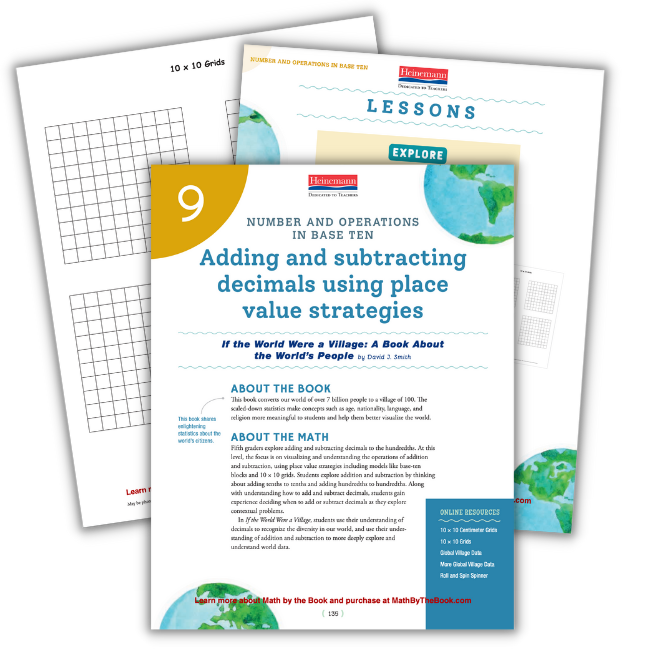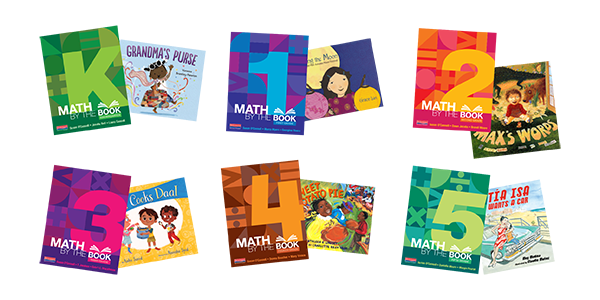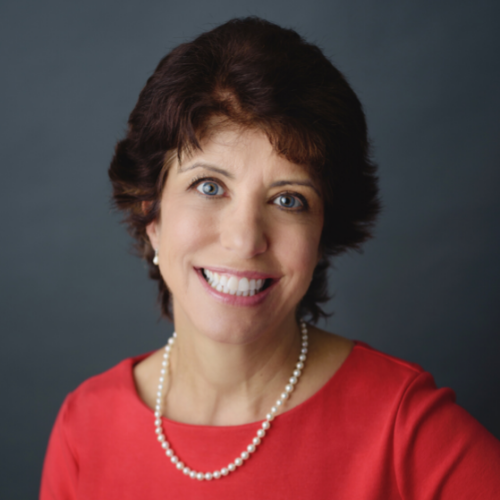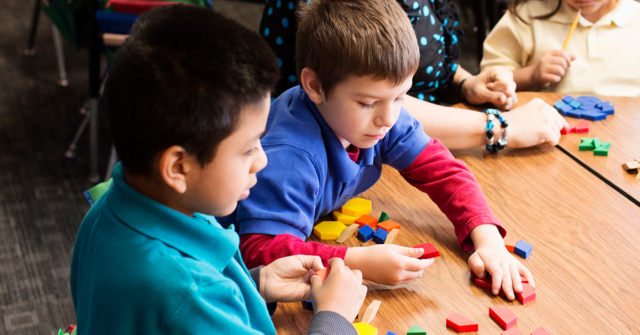
by Margie Pearse, coauthor of Math by the Book: Fifth Grade.

We can no longer see math as a neutral space where social and global issues do not fit. The idea of using math as a tool to understand, critique, and improve the world is just too valuable an opportunity to overlook. But how can we weave social justice and global issues into math? The answer to that question is something that came naturally out of our fifth-grade experience with Math by the Book.
How studying decimals empowered students to change their community
Our fifth-grade classrooms were launching a unit on decimal place value and operations. We started the unit by posting a 10 x 10 grid of post-it notes on the wall. As anticipated, students were very curious about the grid, but we shared nothing…yet. We introduced and read aloud If the World Were a Village by David J. Smith. The students were absorbed by the notion of converting our world of over 7 billion people to a village of 100. It made it so much easier for them to visualize and relate to the data. We knew then it was the perfect time to introduce decimals by connecting the concept of hundredths to represent quantities.
We introduced and read aloud If the World Were a Village by David J. Smith. The students were absorbed by the notion of converting our world of over 7 billion people to a village of 100. It made it so much easier for them to visualize and relate to the data. We knew then it was the perfect time to introduce decimals by connecting the concept of hundredths to represent quantities.
“How might thinking about 100 help us better visualize the world?” we asked. Using the 10 x 10 grid, students were able to represent the data in real time, often wondering aloud how so much of the world could be so different from their own.
Students were captivated by each page of the book as they began to recognize not only the diversity of our world but also inequities in it that exist. The relevance and significance of the data helped make our decimal unit come to life.
The depth of understanding that unfolded because of our decision to merge literature with mathematics gave our students a new perspective on world issues such as food scarcity, food deserts, insufficient water supplies, lack of clean water and air, and gender bias. To think that 0.44 of the world does not always have enough to eat was unacceptable to our students. They were motivated to act, and so they did.
As often happens when students get inspired, our decimal unit spilled into the ELA classrooms where students organized a food drive, wrote letters to local government officials, and made plans to visit Philabundance (the largest hunger relief organization in the Delaware Valley) to volunteer and make sure food was available for as many families as possible in the Philadelphia area.
How studying powers of 10 motivated students to change their school
Each Kindness by Jacqueline Woodson is a tenderhearted story of the regret that comes with lost opportunities to share and offer friendship to others. Students are drawn in by the vulnerability and remorse made by a decision to be unkind to another student.
From the read aloud, students discussed acts of kindness. They wondered if doing them intentionally, rather than randomly, could help spread an unwavering sense of kindness throughout the school community—and do it exponentially?
We started with a real-life scenario: What would happen if Annie wanted to spread kindness? She could find 9 friends and the 10 of them could agree on an act of kindness they would each do that week. With this in mind, we used 10 one's place value disks to represent each of the 10 kind acts. After the first week, each of the 10 friends formed a new group of 10 people to do their kind acts the following week.
Our students soon began to see the power in how 10 intentional kind acts can grow to 100, 1,000, and MUCH more just by initiating a new group of 10 friends each week to help spread kindness.
In taking this Kindness Challenge (shared in Math by the Book: Fifth Grade, starting on page 39), our students used the lesson on kindness and powers of 10 and tested it out by doing 10 intentional acts of kindness, one each day for 10 days.
To help begin the experiment, we brainstormed a list of kind acts, so all students had an idea to use to start us all off. We then charged our students with the job of a scientist, to observe for change. Did they notice kindness spreading? How were their acts of kindness received? Were they passed along to another student?
After the 10 days, we debriefed and challenged ourselves to then each to find another student from the school to do the same as we also continued with another 10 days of kind acts. After this second round, we really started to see evidence of more kind acts happening, with less reports of bullying and less reports of fighting in the school.
Our takeaways from both experiences were many; there is certainly a space in the mathematics class to explore matters of social justice and world issues. When mathematics is used as a tool for understanding these topics and literature is used to help create a context, then students can relate and connect and take on the challenges they begin to see as important.

Margie Pearse has over thirty years of math experience, both as a teacher and currently as a math curriculum specialist supporting kindergarten through eighth grade. She is certified in mathematics, elementary education, ESL, and is a certified presenter for Pennsylvania (PQAS).


